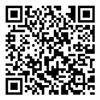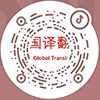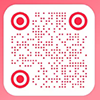Specific Solutions
What Are the Standards for Translation?|Elite Translation Professional Insight
Translation is much more than just converting words between languages—it is a professional service that demands precision, consistency, and contextual understanding.
To ensure quality, the translation industry has developed a series of formal standards and practical evaluation criteria, which guide both service providers and clients.
Below is an overview of the most widely used standards and assessment frameworks.
1. International Standards for Translation Services
ISO 17100 – Translation Services Requirements (Global Standard)
Published by the International Organization for Standardization (ISO), ISO 17100 is the most recognized international standard for translation quality assurance. It outlines:
Required qualifications for translators and reviewers
A three-step process: translation → editing → review
Defined roles for project management and client communication
Documentation, traceability, and quality control mechanisms
Many international projects and corporate tenders require vendors to be ISO 17100–certified.
ASTM F2575 – U.S. Translation Quality Guideline
Issued by ASTM International, this guideline emphasizes customization and client-specific needs.
Rather than prescribing one-size-fits-all quality metrics, it recommends defining project parameters (target audience, domain, format, purpose) up front.
China National Standard GB/T 19363.1 – Translation Service Specification
This is the Chinese domestic equivalent of ISO 17100.
It outlines processes, terminology handling, delivery formats, and service workflows.
Many translation providers in China align with this standard to ensure national and international compatibility.
2. Practical Quality Criteria Used in the Industry
Even when formal certification is not required, most professional providers use the following four core dimensions for internal QA:
1. Accuracy
Correct terminology
No omissions, mistranslations, or additions
Proper handling of numbers, names, dates, and legal terms
2. Fluency
Grammatically correct and natural-sounding language
Clear sentence structure
Adherence to target language norms and writing style
3. Consistency
Terminology and tone consistent throughout the document
Alignment with existing style guides or termbases
Uniform treatment of repeated content
4. Formatting
Preservation of layout, numbering, and hierarchy
Tables, figures, and annotations correctly translated and placed
Compliance with file type requirements (Word, PDF, InDesign, etc.)
3. Project-Specific Expectations
Different types of content call for different quality focuses:
Legal contracts: Accuracy, neutrality, and legal clarity
Technical manuals: Terminology consistency and logical structure
Marketing copy: Style, localization, and cultural sensitivity
Visa and immigration files: Compliance with embassy or court submission standards
4. How Elite Translation Ensures Quality
At Elite Translation, we implement a full-spectrum QA process that includes:
Pre-translation analysis (goals, terminology, tone)
Translation by subject-matter linguists
Independent editing and review
Final linguistic QA and formatting check
Project manager supervision and delivery validation
We also use term management tools, translation memory systems, and a client feedback loop to continuously improve.
Conclusion:
Translation isn’t just about being readable—it’s about being accurate, professional, and fit for purpose.
Choosing a team that understands and adheres to recognized translation standards is the key to successful global communication.
Need support with translation quality assessment or industry-specific compliance?
Contact Elite Translation for tailored language solutions built on international best practices.


















